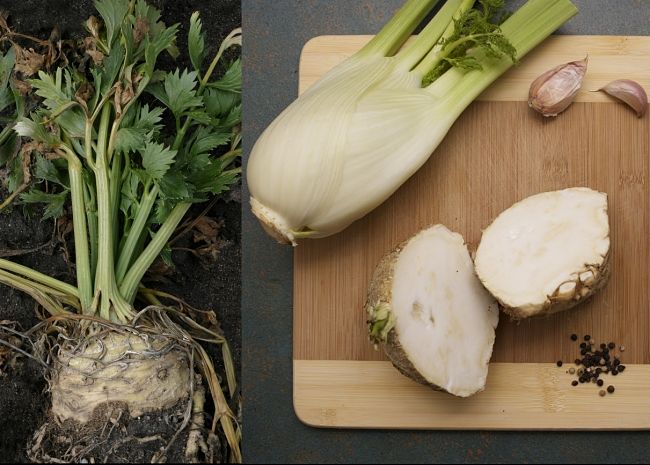Planting and Growing Guide for Celeriac (Apium sp.)
Description
Celeriac is a cool-weather biennial that is usually grown as an annual. It is a form of celery which has a swollen root and the lower stem grows into a bulb when mature. The best way to ensure they transplant well is to raise seeds in individual pots (or jiffy pots) and plant out after the last frost is expected. This extends the growing seed, compared with directly planting into the garden bed. This helps the plant develop develop a good root and the swollen lower stem bulb. Grow in a rich fertile soil and water frequently during the summer months. Celeriac plants should be moved outdoors to the garden when about 10 cm (4 inches) tall and hardened off for a short period of time before planting out in their final locations. Space the plants about 35 cm (18 inches) apart, with a similar spacing between rows. In cold climates, start in late winter or early spring, about 10 week before the last Frost. Sow into small or seed trays set under glass, or in a hot house.
Scrub and peel Celeriac, and boil, steam or stir-fry. Can be cooked whole or diced or sliced. Taste resembles celery.
Planting Guide
Seed Depth: Grow in seed trays or sow directly into the garden bed after the last frosts. Sow about 5 mm (1/4 inch) deep, but the seeds require light to germinate and so cover very lightly. Keep soil moist. Celeriac may take 2 or 3 weeks to germinate, so be patient.
Space between plants: Space plants about 45-70 cm (12-18 inches) apart. Space rows at 50-80 cm (15-18 inches)
Harvest Time: Harvest in about 14-25 weeks. Small leaves can be picked earlier.
Hints:
- Celeriac does best in a rich, well-drained moist soil, with some mulch placed around the plants
- Regular watering is required, especially in hot weather
- Plants tend to run to seed before forming a good root base, making them a challenge to grow successfully
- Celeriac has shallow roots. Add mulch around the plants to conserve moisture and keep the soil temperatures even.
- Needs a soil rich in organic matter, so add well-rotted compost or manure
- Frost tender and hot weather causes problems
- Harvest with a sharp knife as the roots are tightly bound

Disclaimer: The PlantWhatWhen vegetable planting guide is only designed for use as a very general reference for home gardening purposes. It is not to be used for farming, markets or commercial activities of any kind whatsoever. We take absolutely no responsibility for the accuracy and adequacy of the information provided on this site. We recommend that you consider your local climate, weather patterns and conditions when deciding what and when to plant in your home garden. It's entirely your own decision. Happy Gardening and Best Wishes!